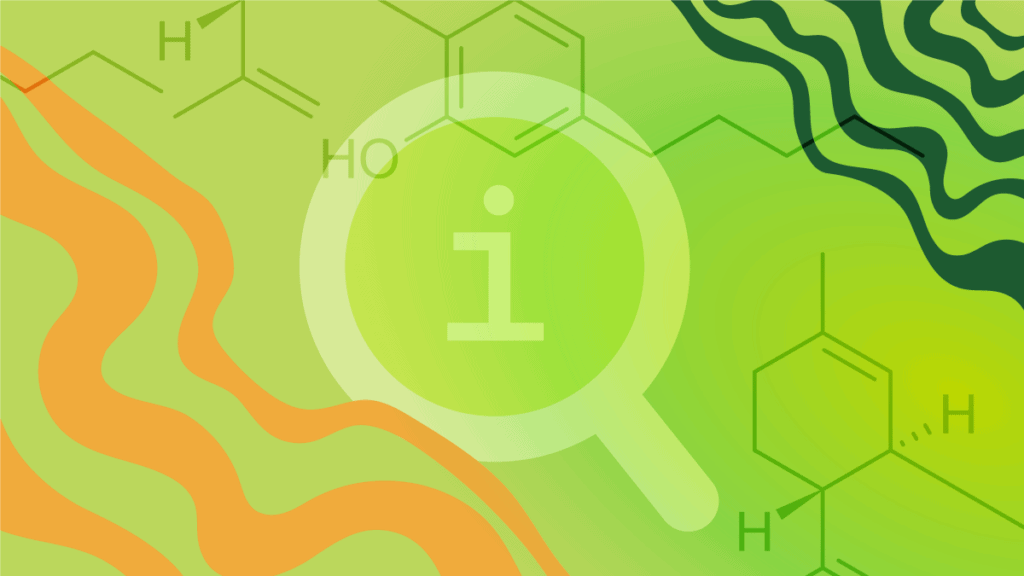- Dispensaries
-
Cultivars
By Cultivar Types
By Effects
By Terpenes
- Blog & Press
- About
- Products
Medical Significance of Cannabis Terpene Profiles
- Cenk Cetin
- January 31, 2024
- 11:17 am
- No Comments

Introduction
Cannabis is merely a plant; when you look at it from an obvious point of view, there is so much more to a bud than just merely a plant. Cannabis has been utilized by individuals for eons, particularly in self-care. The very first form of cannabis self-care comes in the form of holistic remedies, but as time moves on, so has the application of cannabis in the medical field, and in the modern day, we are able to make sense of why cannabis has such versatile medicinal properties, in particular the terpenes.
What are cannabis terpenes? Basically, cannabis terpenes are the various molecules that give each cannabis strain its different properties, the basics are the aromas, and each terpene gives cannabis strains its aroma and flavor profiles. In a more complex sense, terpenes in cannabis play a big role when applied towards medical use, with each of the major 7 cannabis terpene profiles that will be mentioned later all playing a big part in creating remedies for ailments ranging from insomnia to depression, for example, myrcene gives some strain that earth aroma and also gives a strain its anti-inflammatory properties. Terpenes play a vital role because, without any knowledge about terpenes, we would not be able to unlock the full potential and medical benefits of cannabis.
Terpenes in Medicinal Cannabis
Anti-inflammatory: Many terpenes possess potent anti-inflammatory properties, making them potential allies against conditions like arthritis, pain, and inflammatory bowel disease. Some examples include beta-caryophyllene, found in cloves and rosemary, and limonene, known for its citrusy scent.
Antioxidant: Terpenes can act as powerful antioxidants, scavenging harmful free radicals in the body and protecting cells from damage. This could potentially offer benefits for neurodegenerative diseases, cancer, and cardiovascular health. Myrcene, frequently found in hops and mangoes, and pinene, with its pine-like aroma, are examples of terpenes with strong antioxidant activity.
Analgesic: Some terpenes exhibit pain-relieving properties, potentially offering natural alternatives or complements to conventional painkillers. Humulene, present in hops and ginger, and linalool, with its relaxing lavender scent, are examples of terpenes with potential analgesic effects.
Anxiolytic and antidepressant: Several terpenes are being investigated for their potential to reduce anxiety and depression. Linalool, once again, takes center stage here, along with limonene and pinene. Studies suggest they may interact with the brain’s neurotransmitter systems, leading to mood-boosting effects.
Neuroprotective: Some terpenes, like pinene and myrcene, are being explored for their potential to protect brain cells from damage and degeneration. This could offer hope for managing neurodegenerative diseases like Alzheimer’s and Parkinson’s.
Anticancer: Research suggests that certain terpenes may have anti-cancer properties, potentially inhibiting cancer cell growth or even promoting apoptosis (programmed cell death) in cancer cells. Limonene, pinene, and humulene are among the terpenes under investigation for their potential anti-cancer activity.
Antimicrobial and antifungal: Many terpenes possess antimicrobial and antifungal properties, offering natural alternatives for fighting infections. Studies have shown the effectiveness of these terpenes against various bacteria, fungi, and even viruses.
Medicinal Cannabis Terpenes Profiles
Myrcene: This particular terpene gives buds earthy and herbal. The medicinal properties of myrcene are antibacterial, antimicrobial, and antioxidant, with anti-inflammatory, analgesic, sedative, and muscle-relaxing effects. Individuals who require anti-inflammatory, analgesic, and sedative effects will benefit from strains with Myrcene as one dominant terpene.
Limonene: Strains that have a citrus aroma as the leading scent because of the heavy presence of the terpene Limonene. The benefits of this terpene lie in its anti-inflammatory, antifungal, antidiabetic, anticancer, neuroprotective, and gastroprotective properties, thus going into a wider physical ailments realm, i.e., it can be used to treat physical illnesses.
Pinene: When you get a strain with that delightful pine aroma as the “opening scent,” it is more than likely the responsibility of the terpenes Pinene. This terpene is well known to aid patients struggling with breathing; Pinene fulfills the role of being a bronchodilator, which simultaneously can lead this terpene to also have antiallergenic properties as well; in summary, Pinene is a terpene beneficial towards those with respiratory ailments.
Caryophyllene: The spicy flavor, as well as aroma, is contributed by Caryophyllene. This terpene’s main focus properties are its analgesic and anti-inflammatory qualities, which can be applied for use in pain management, bodily pains, and joint pains.
Terpinolene: the terpene that gives some strains a complex aroma ranging from floral, herbal, to pine; however, this terpene plays a major role in the application of cannabis in mental healthcare, mainly because this terpene gives some cannabis strains its sedative qualities, ideally used for anxiety relief
Humulene: this spicy, earthy, woody-scented terpene has anti-inflammatory, antibacterial, and appetite-suppressing effects. The anti-inflammatory and antibacterial aspects of this terpene can be used in topical cream. As for the appetite-suppressing qualities, it may be possible that this can be used for dietary supplements.
Linalool: The terpene that gives cannabis strains the inviting floral with lavender undertone aroma, yet its medicinal qualities can be used as an anticonvulsant and an anxiolytic, which proves that this terpene can treat complex mental health symptoms such as epileptic seizures, personality disorders, and stabilizing moods.
Synergies and the Entourage Effect on Medical Cannabis
The Entourage Effect can be explained simply as the compounds in cannabis flowers from the cannabinoids, terpenes, and flavonoids interacting with one another to enhance the overall effect of a cannabis flower. These compounds merely form the characteristics of cannabis in terms of impacting the psychoactive and medicinal attributes. The Entourage Effect often acknowledges the notion that these different compound combinations in order to achieve the therapeutic effect, with the result being for the medical cannabis users to feel relaxed or uplifted.
Entourage Effects: Role in Maximizing Therapeutic Outcomes
Advocates who have focused on the Entourage Effects would state that the character of cannabis is not determined by just the basic THC component, instead, they said, there are many hundreds of different chemicals in a cannabis plant and that flavonoids, cannabinoids, and terpenes, all play a crucial and symbiotic role in the biological construct of a cannabis plant.
Marijuana brands that aim towards healthcare would often focus on the Entourage Effect during the process of adjusting the concentration of each terpene and the cannabinoid, the process is aimed to enhance the therapeutic effects based on the specific requirements of a medical cannabis user. Neurologist and cannabis researcher Ethan Russo has suggested that cannabinoids like CBD are able to balance out the negative effects that may come from the use of THC, this shows that the entourage effect will allow potential medical cannabis users to experience the full therapeutic benefits from the terpenes.
While some in the cannabis industry and ongoing research suggest the existence of the entourage effect — the idea that various compounds in cannabis work together for enhanced effects — scientific evidence is currently limited, leading many scientists to be skeptical. The lack of double-blind clinical trials considered the gold standard in medical research, has hindered a thorough investigation into the entourage effect. Controversy persists, with industry professionals and researchers highlighting the need for more rigorous studies to establish the validity of the entourage effect and gain a deeper understanding of its mechanisms.
Tailoring Treatment with Terpene Profiles
When making a decision on using the right treatment, it is not just about which strain is best for treating which symptoms; what is most important in medical cannabis are the terpenes. As mentioned earlier, each terpene provides certain benefits that can be used for treating certain illnesses, for example, if an individual is having respiratory difficulties, it is best to use extracts that is Pinene based; this terpene is beneficial for any respiratory ailment because Pienene is been known to help increase airways, simultaneously assisting with allergies relating to the respiratory system.
Applying Medicinal Terpenes
There are no limitations on the methods of consumption in the medical cannabis field; however, when using cannabis medication for a specific ailment involves more than just smoking or vaporizing a bud, rather the terpenes extracted can be utilized in various methods, cannabis extracts for oral ingestion that focuses on a certain terpene is one method,
Utilizing medicinal terpenes in various cannabis-based medical products and consumption methods, another example comes from the uses of Humulene, this terpene is beneficial for skincare, which is why some topical creams that uses cannabis extracts focuses on the benefits Humulene.
Conclusion
Medical Cannabis is more than just concluding the cannabis plant as an herb that has benefits when smoked. Medical cannabis involves the complexity of terpenes and how each individual terpenes is able to help medical cannabis users mitigate their illnesses. Many terpenes that makes up the cannabis plant are able to cure common ailments such as anxiety and stress, when dig deeper into the realm of terpenes, there is a whole pharmacy dedicated for specific ailments such as PTSD, pain relief for glaucoma. When selecting the right strain to assist with mitigating a symptom, make sure to do some research and find strains that are loaded with the terpene that is suitable to alleviate the specific illness.



